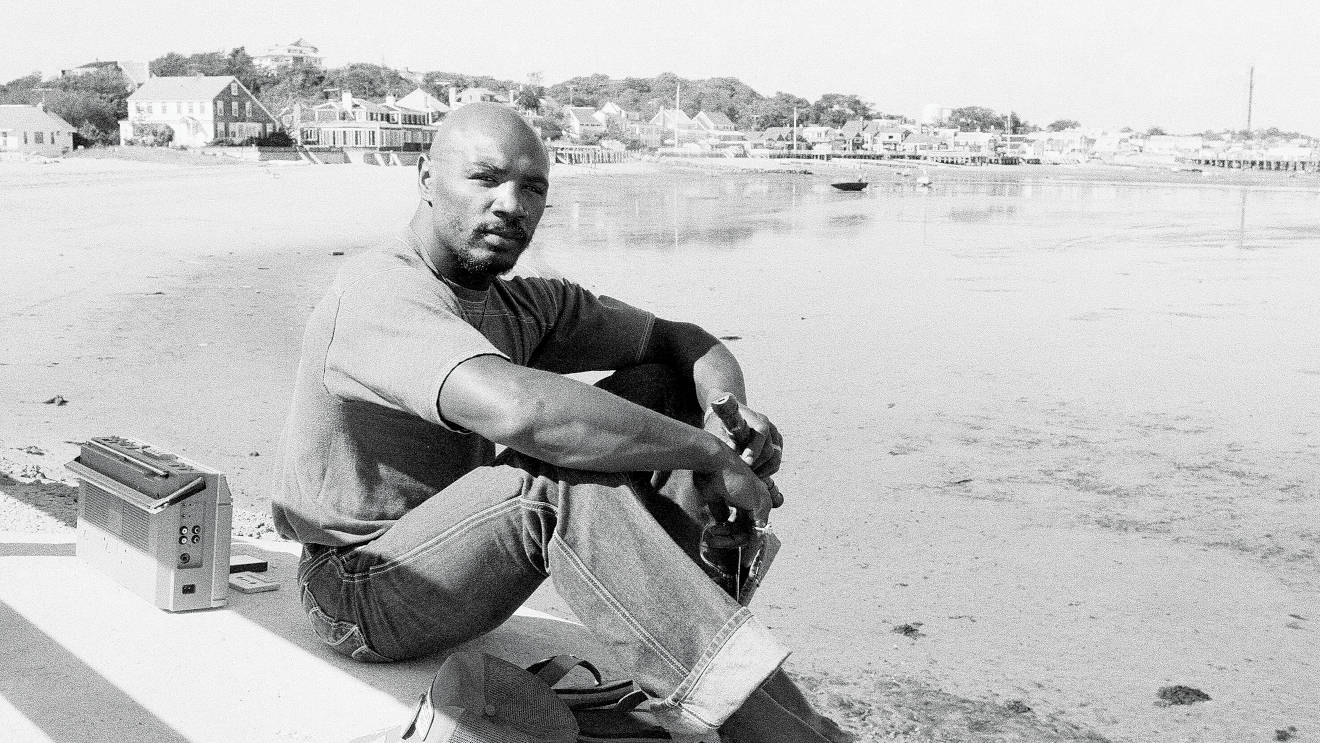Stricken by blindness, Sugar Ray Seales was recently discovered living in a homeless shelter. Here, Eric Armit delves into the story of a proud boxer with a gold-standard Olympic pedigree who fought Hagler, Palomino, Minter and more.
Born: 9 April 1952 (other sources suggest 4 September 1952) Saint Croix, U.S. Virgin Isles
Record: 68 fights, 57 wins (34 by KO/TKO), lost eight (three by KO/TKO against Marvin Hagler, Alan Minter and Dwight Davison) three draws.
Division: Middleweight
Stance: Southpaw
It culminated in 1972 Olympic gold: Sugar Ray Seales’s Amateur Career
He achieved the incredible feat of winning an Olympic gold medal during the 1972 Games, becoming the sole American fighter to accomplish this remarkable feat. Additionally, he emerged as the gold medalist at both the 1971 US National Championships and the 1973 National Golden Gloves. During the 1971 US National Championships, he triumphed over Carlos Palomino in the semi-finals, but unfortunately suffered defeat against Palomino in the gold medal match of the 1972 tournament. Notably, he defeated Pete Ranzany, who had previously eliminated Palomino, in the US Olympic Trials.
Seales turned professional in January 1973 in Tacoma, winning an eight-rounder on his debut
1973 – Had 14 fights, winning them all, beating 100-fight veteran Chucho Garcia and Britain’s Dave Coventry.
1974 – Had 10 fights, winning 8, beating David Love and losing, then drawing with Marvin Hagler.
1975 – Had 7 fights, winning 6, beating Mike Dixon, Mike Lancaster and Renato Garcia but losing to Eugene Hart.
1976 – Had 4 fights, beating George Cooper and Bobby Hoye but losing to Alan Minter.
1977 – Had 11 fights, losing to Ronnie Harris in March, then winning 10 in a row, including victories over Tony Gardner, Vincente Medina, Mike Hallacy and Doug Demmings.
1978 – Had 7 fights, beating Sammy Nesmith, drawing with Willie Warren and losing a majority decision to Ayub Kalule in Denmark.
1979 – Had three fights, including a loss against Marvin Hagler and a draw with Mike Colbert.
1980 – Was 4-1, Beating 31-0 Art Harris but losing to Dwight Davison. Outpointed Jamie Thomas in a fight that eventually led to Seales retiring.
1981 to 1983 – Won 7 of his 8 fights, beating Sammy Nesmith and John LoCicero but losing to unbeaten James Shuler. He had his last fight in January 1983 stopping Max Hord in the first round.
The Story of Sugar Ray Seales
Seales was born in St Croix, US Virgin Islands, as his father was serving in the US Army at that time. He was raised along with seven siblings, all of whom had a father who had been a member of the US Army boxing team. In 1965, the family relocated to Tacoma, Washington.
At the time, the Pacific Northwest was experiencing a thriving period in amateur boxing, which attracted talented individuals like him and his brother Wilbur to join the Tacoma Boys Boxing Club. Notably, this era produced renowned champions like Rocky Lockridge, Leo Randolph, and Johnny Bumphus.
Seales’ journey, as depicted on BoxRec, commenced in 1966 within the 95-pound category. He gradually progressed across various weight divisions, securing victories in renowned tournaments such as the Tacoma Golden Gloves, Seattle Golden Gloves, Inland Empire State Golden Gloves, Oregon Golden Gloves, and Western Region Golden Gloves.
After securing a bronze medal at the 1970 Golden Gloves in the 132 lb weight class, he went on to claim the 1971 National title in the 139 lb division. On his journey to the final, he defeated Carlos Palomino.
Despite losing to Palomino in the 1972 National final, he managed to recover and secure victory in the US Olympic Trials. The Olympic Games took place in Munich, where Seales triumphed over Ulrich Bayer, the promising German contender, in his initial match. At a mere 19 years of age and serving in the US Air Force, Seales persisted and ultimately emerged as the recipient of the coveted gold medal.
However, the Games were marred by the tragic event of terrorists from the Black September group invading the athletes’ quarters and brutally murdering eleven Israeli coaches and athletes, along with a German policeman.
Although there was a possibility of the Games being canceled, they proceeded regardless, and Seales emerged as the sole gold medalist for the US Boxing Team. Despite his victory, Seales received a meager signing-on bonus of only $1000 upon turning professional. In contrast, another boxing legend, Sugar Ray Leonard, earned a substantial $40,000 for winning a gold medal in 1976.
According to BoxRec, Seales’ amateur record is listed as 48-8. However, this does not take into account his fights as a junior, club shows, and other sources. In fact, Seales himself, along with several other sources, claim his amateur record to be an impressive 338-12.
After successfully winning his initial 21 paid fights, he faced his first defeat in August 1974 in Boston against Marvin Hagler, who held an undefeated record of 14-0 at the time. However, they encountered each other once more in November 1974, this time in Seattle. The bout ended in a majority draw, with one judge declaring Seales as the victor and the remaining two judges scoring it as a draw.
Seales faced setbacks against Eugene Hart, Alan Minter, and Ronnie Harris, which nearly derailed his career. However, he managed to bounce back by achieving an impressive record of 15 wins, 0 losses, and 1 draw in his next 16 fights. Unfortunately, in November 1978, he suffered another defeat in Denmark against Ayub Kalule, who would later become the WBA light-middleweight champion.
Seales’ aspirations for a title shot were shattered in February 1979 when he was knocked down three times and ultimately defeated in the first round by Hagler. The following year, a loss by stoppage against Dwight Davison dealt him another devastating blow. However, the most detrimental setback occurred in his subsequent fight in August 1980. Despite securing a points victory against the considerably less skilled Jamie Thomas, Seales experienced a severe injury when his left eye was accidentally poked, resulting in a detached retina.

Seales competed against Marvin Hagler in three matches, including a draw in 1974. The company’s performance was exceptional. (Photo by Albert Foster/Mirrorpix/Getty Images)
Despite existing issues with his right eye, Seales managed to conceal his injuries and persist in boxing, albeit with severely impaired vision. He achieved victory in seven out of his following eight fights before news of his difficulties emerged, ultimately leading to his retirement. The extent of the damage inflicted upon his eye was severe enough that he was classified as legally blind. To address this, he underwent seven surgeries, resulting in a minor enhancement in his right eye’s visual capability.
All of Seales’ funds were consumed by the operations, leaving him with no choice but to declare bankruptcy. The judge overseeing his case remarked that Seales couldn’t even afford the fee for filing bankruptcy. A benefit show was organized in Tacoma in an effort to support Seales, and notable figures like Muhammad Ali, Hagler, Ray Mancini, and others attended. However, despite their presence, only 4,000 tickets were sold, resulting in a negligible amount of money raised.
Upon learning about Seales’s desperate situation, Sammy Davis Jr. referred to his predicament as the “three B’s”: black, blind, and broke. Davis played a crucial role in initiating the benefit show, but unfortunately, it did not succeed. Despite this setback, Davis generously contributed $100,000 to alleviate Seales’s financial burden. This act of kindness provided Seales with an opportunity to begin his life anew.
After dedicating 17 years of his life to assisting autistic children in Tacoma schools, he decided to retire and relocate to Indianapolis to accommodate his wife’s desire to be closer to her family. It was only a matter of time before Seales found himself at a nearby gym, where he started training and mentoring young boxers, including the highly skilled and undefeated lightweight world contender, Frank Martin.
In 2018, Seales was honored with an induction into the Indianapolis Boxing Hall of Fame, while the US Virgin Islands declared 14 April 1984 as Sugar Ray Seales Day. Following the passing of his wife, Seales returned to Tacoma, where he rejoined some of his remaining siblings. At the age of 71, he takes pride in his resilience, never allowing misfortune to conquer him. Without a doubt, whenever he steps outside, Sugar Ray ensures his gold medal accompanies him.
Not only does he proudly display his medal to fellow boxers, but he also shares it with any young hopeful who dreams of entering the boxing ring. Regardless of whether they are boxing enthusiasts or not, he understands the immense joy it brings to be photographed with a prestigious gold medal. Although life has deprived him of much of his eyesight, the gold medal he triumphantly secured in 1972 will forever remain untouchable.
